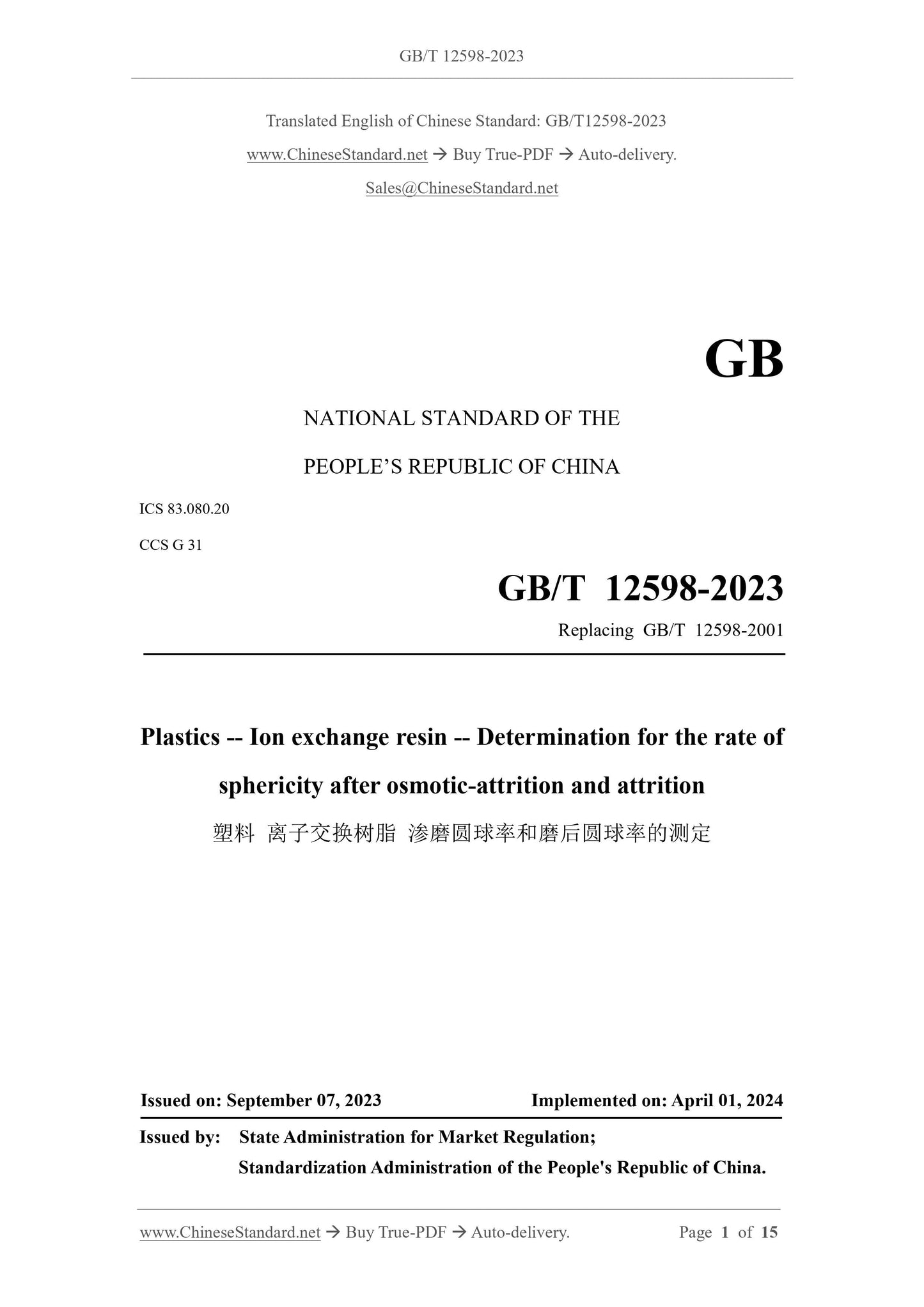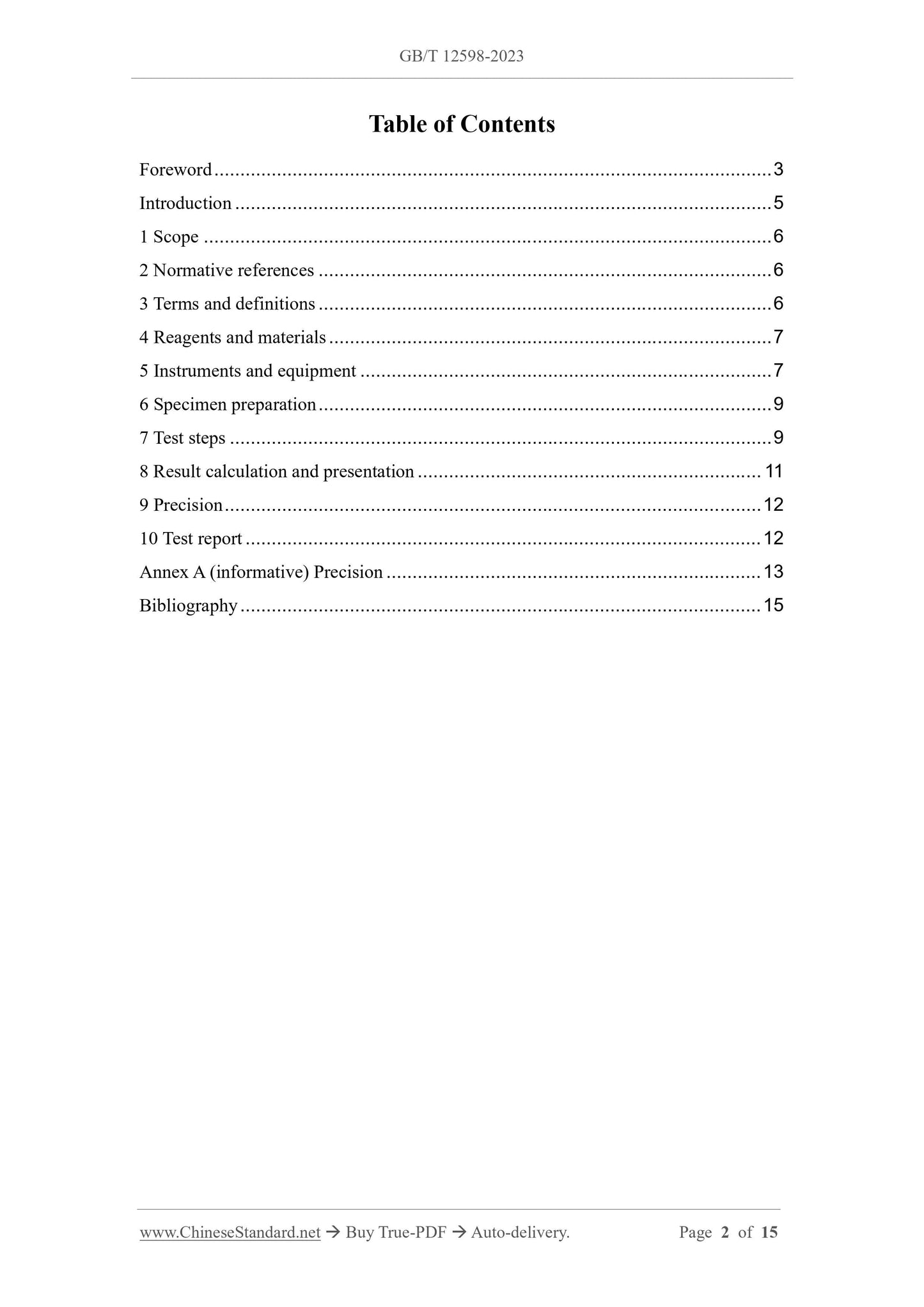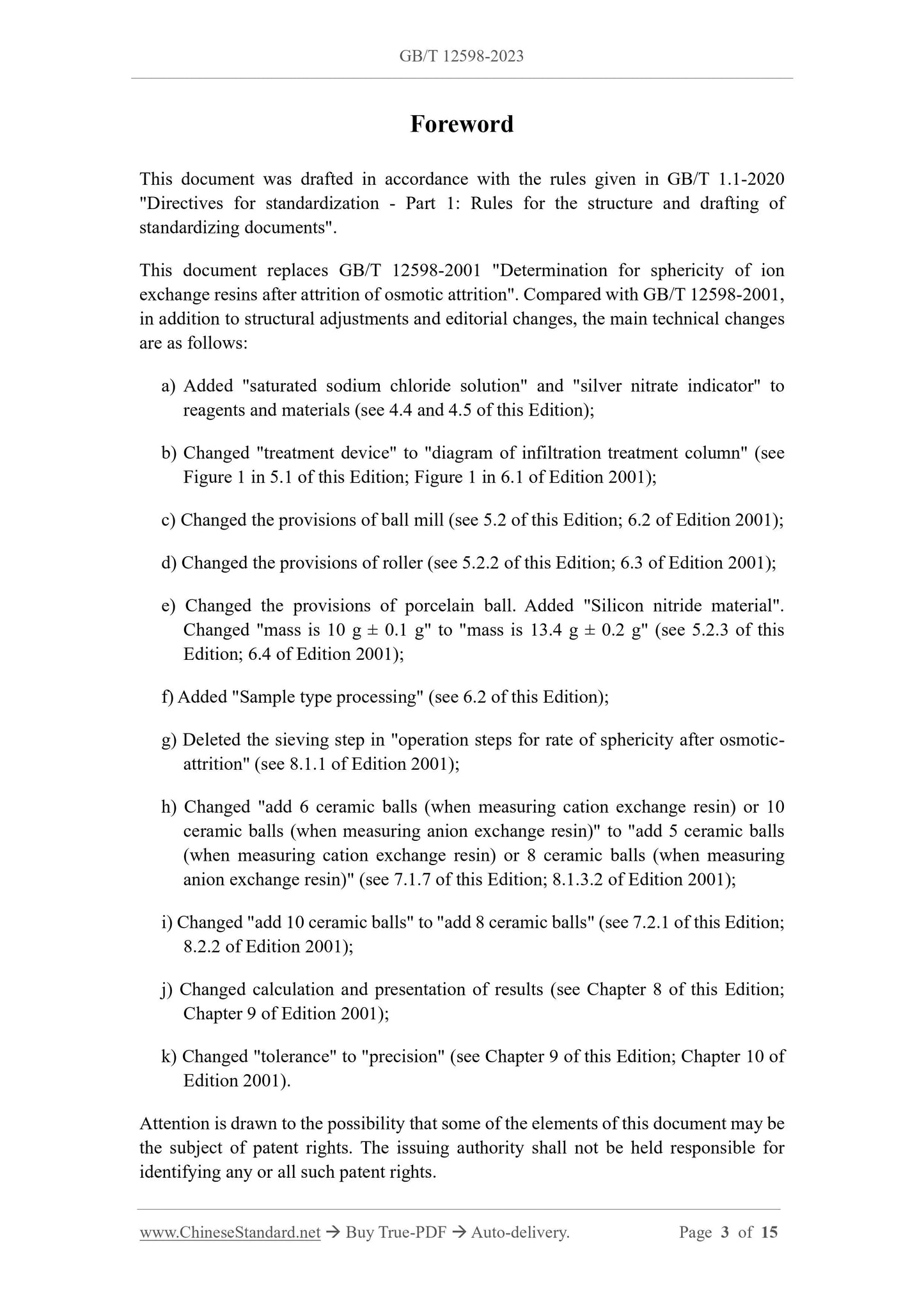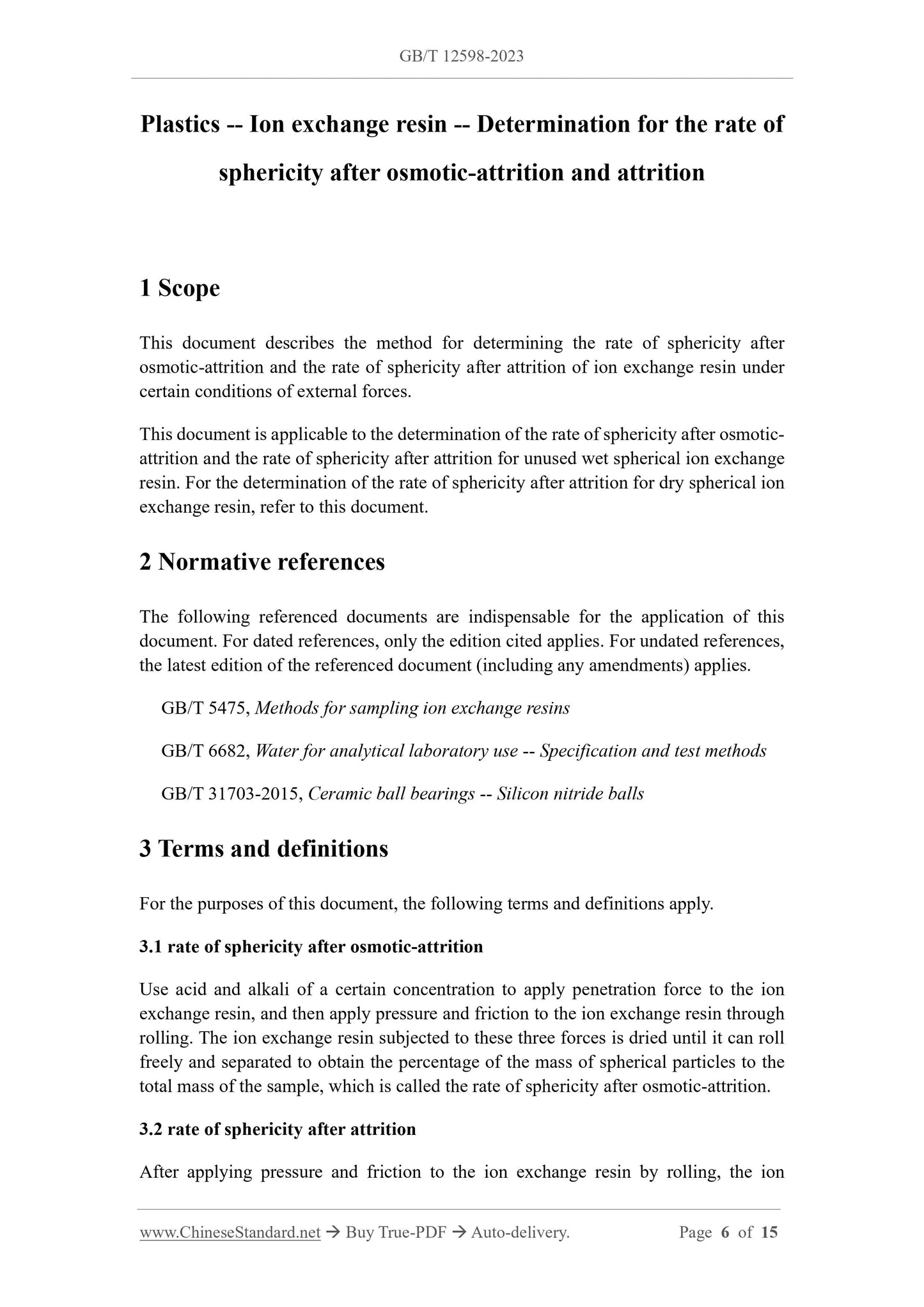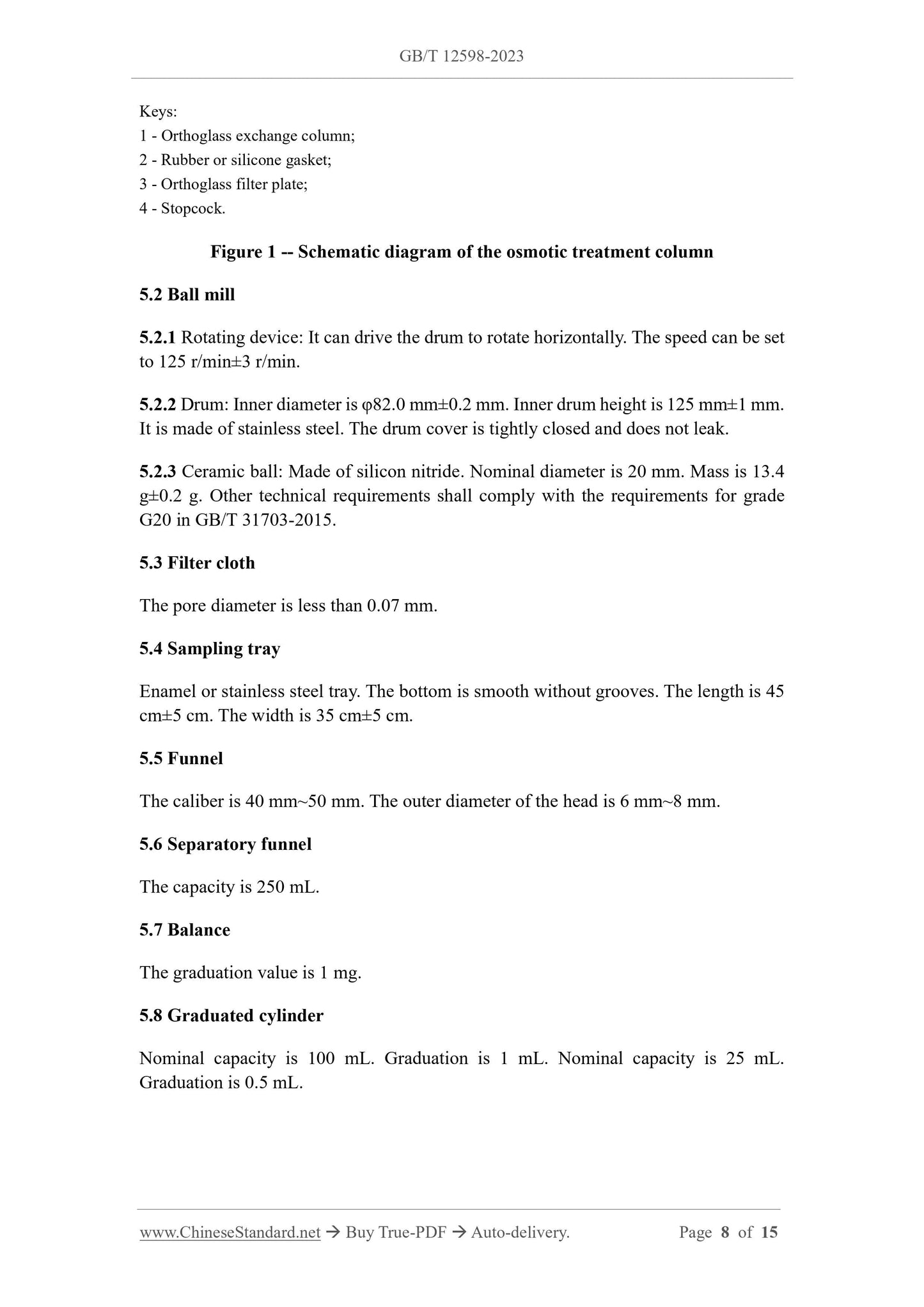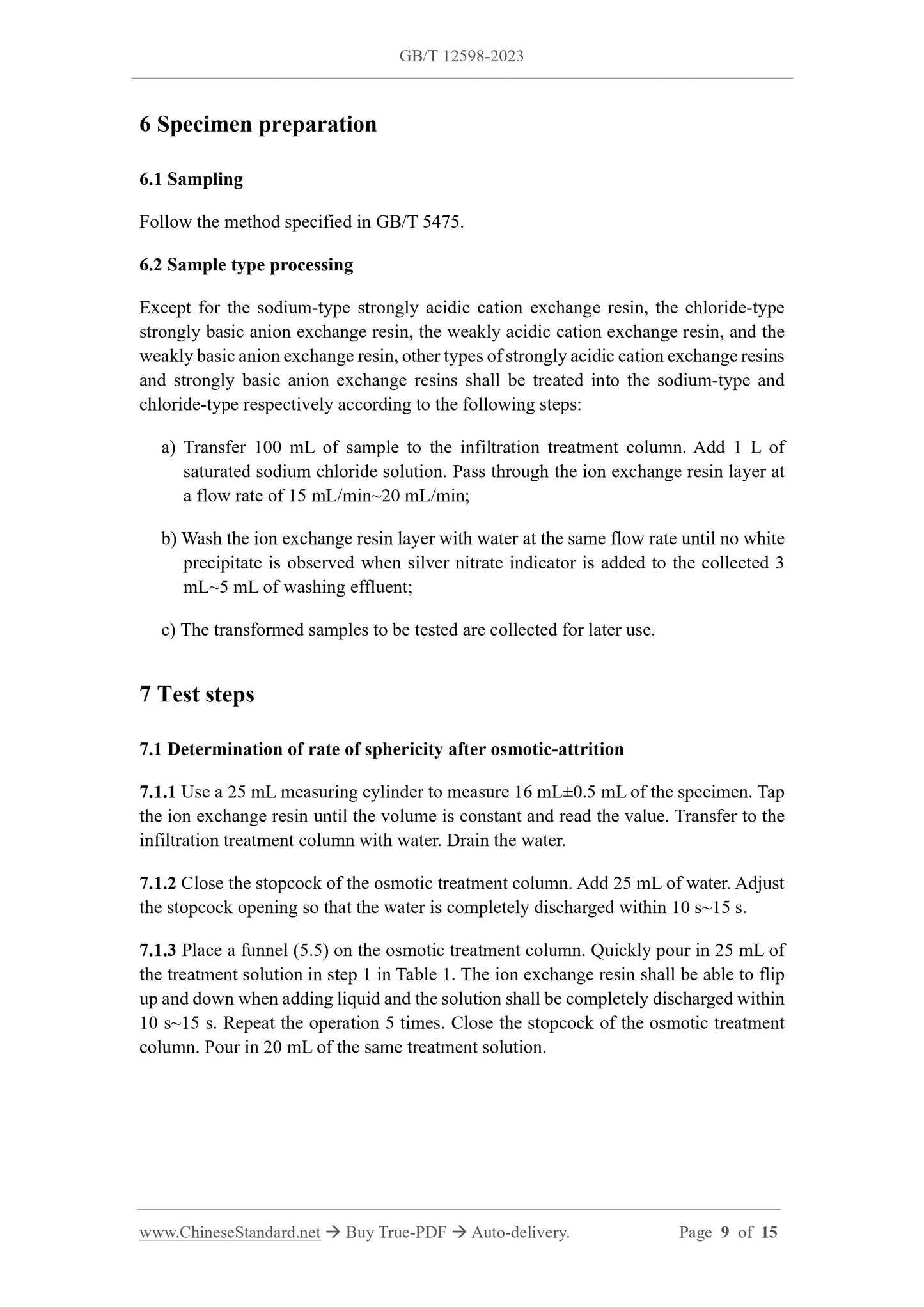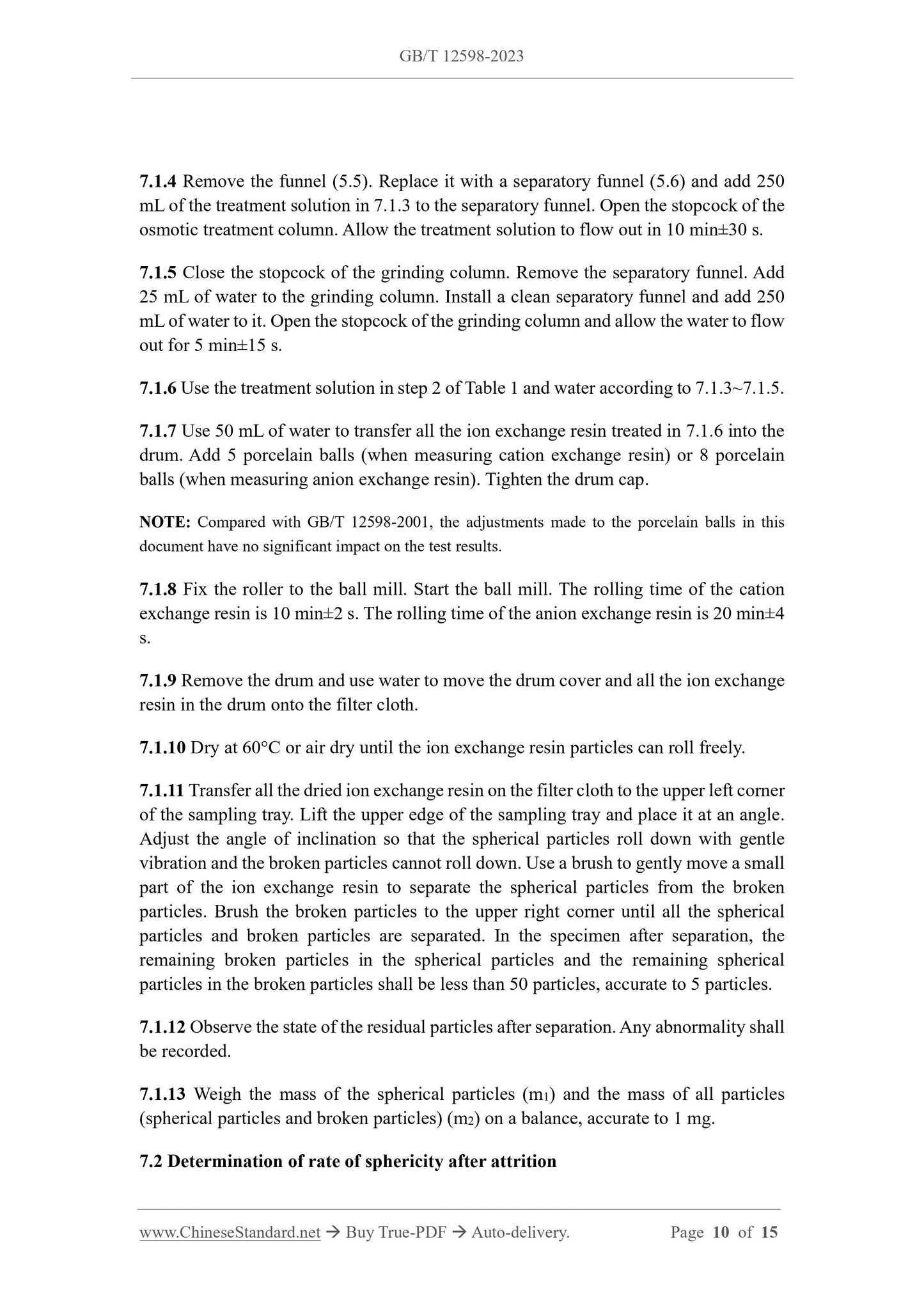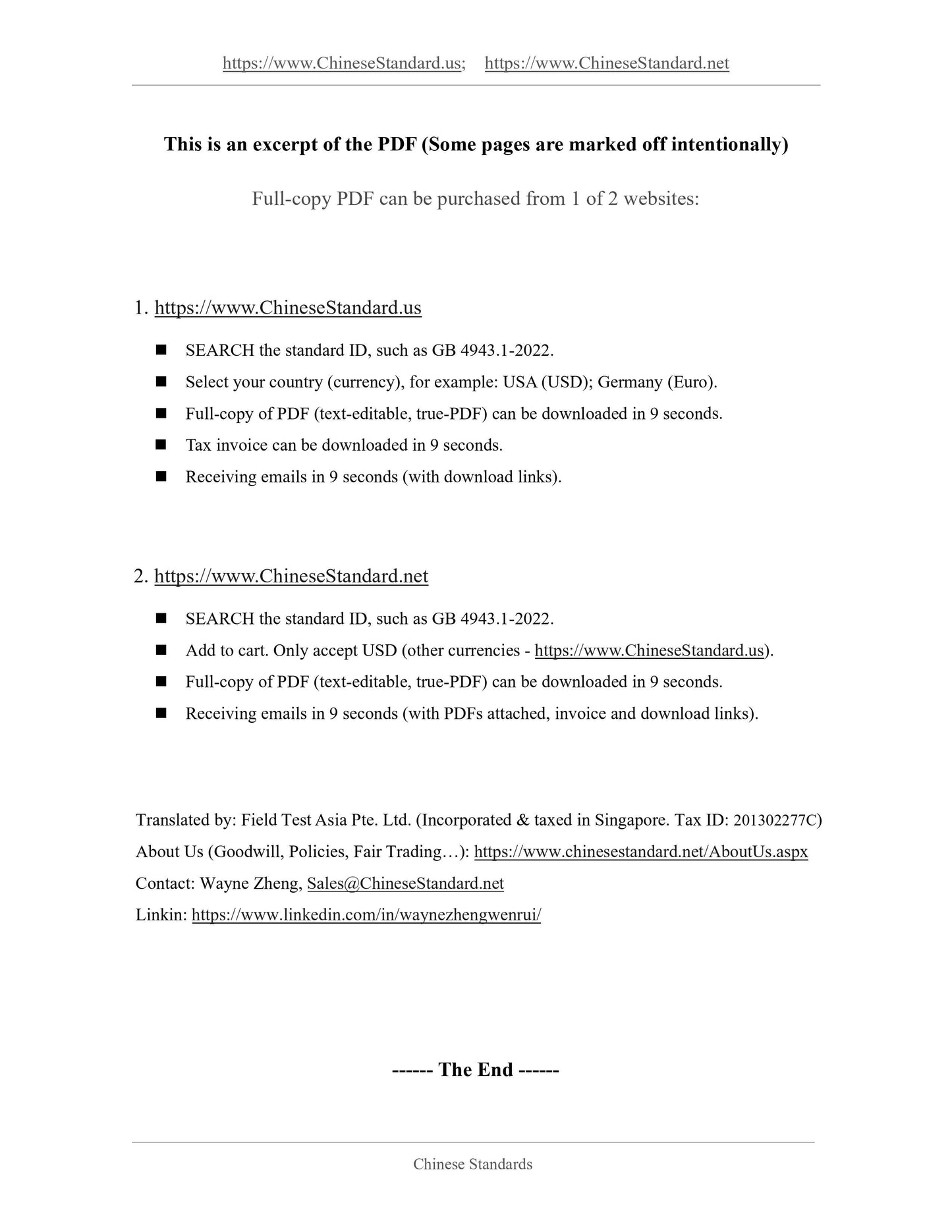1
/
of
8
www.ChineseStandard.us -- Field Test Asia Pte. Ltd.
GB/T 12598-2023 English PDF (GB/T12598-2023)
GB/T 12598-2023 English PDF (GB/T12598-2023)
Regular price
$245.00
Regular price
Sale price
$245.00
Unit price
/
per
Shipping calculated at checkout.
Couldn't load pickup availability
GB/T 12598-2023: Plastics - Ion exchange resin - Determination for the rate of sphericity after osmotic-attrition and attrition
Delivery: 9 seconds. Download (and Email) true-PDF + Invoice.Get Quotation: Click GB/T 12598-2023 (Self-service in 1-minute)
Newer / historical versions: GB/T 12598-2023
Preview True-PDF
Scope
This document describes the method for determining the rate of sphericity afterosmotic-attrition and the rate of sphericity after attrition of ion exchange resin under
certain conditions of external forces.
This document is applicable to the determination of the rate of sphericity after osmotic-
attrition and the rate of sphericity after attrition for unused wet spherical ion exchange
resin. For the determination of the rate of sphericity after attrition for dry spherical ion
exchange resin, refer to this document.
Basic Data
| Standard ID | GB/T 12598-2023 (GB/T12598-2023) |
| Description (Translated English) | Plastics - Ion exchange resin - Determination for the rate of sphericity after osmotic-attrition and attrition |
| Sector / Industry | National Standard (Recommended) |
| Classification of Chinese Standard | G31 |
| Classification of International Standard | 83.080.20 |
| Word Count Estimation | 14,185 |
| Date of Issue | 2023-09-07 |
| Date of Implementation | 2024-04-01 |
| Older Standard (superseded by this standard) | GB/T 12598-2001 |
| Issuing agency(ies) | State Administration for Market Regulation, China National Standardization Administration |
Share
